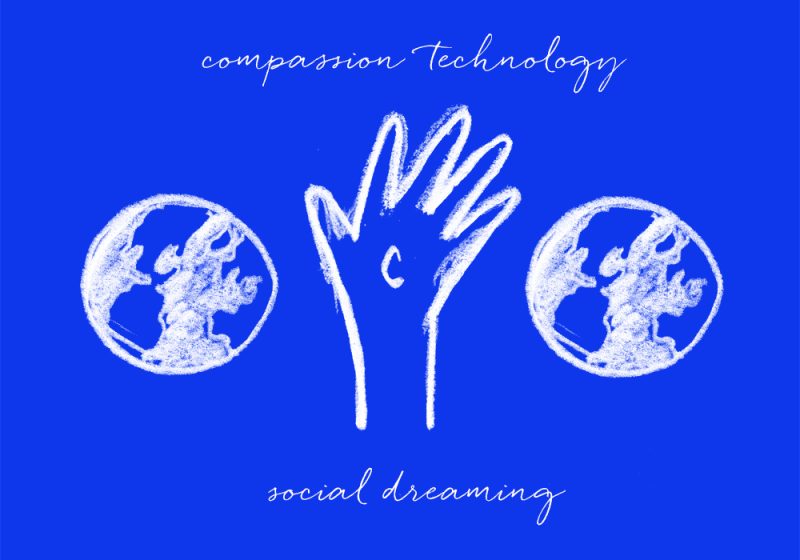Social Dreaming & Compassion Technology in Design
Posted on December 16, 2016“The industrial revolution that gave rise to modern capitalism greatly expanded the possibilities for the material development of humankind. It continues to do so today, but at a severe price, Since the mid eighteenth century, more of nature has been destroyed than in all prior history.” (1)

We are now 16 years into the 21st century. A century in which both capitalism and technology have reshaped and continue to reshape culture and life as we know it, but despite their expansive reach across most human endeavors, both of these ideologies too often leave out on the sidelines the most profound human and global values: happiness, empathy and compassion, social dreaming and the need to feel valued. The “unintended consequences” of the industrial revolution and now the technology revolution. Elements that have been bartered for progress and growth in our civilization, leaving us in turn with climate change, emerging narcissistic governments created by social media, and the loss of meaningfulness and value in our lives(2).
In relation to capitalism and technology, happiness, empathy, social dreaming and meaningfulness, may seem like vague and floaty terms that belong only to the “innocent”, the ignorant or the children. A forbidden fruit in a complex, institutional, “real world”, when in reality they are the driver and the missing element in getting us out of the social and environmental pit hole that we are in. For how can we achieve peace, eradicate hunger or save our planet from climate change, if we don’t love and empathize with “it” first? It may seem odd to speak of humanity and emotions as the pointer of how we must design in the future, but like journalist Krista Tippet said, as she paraphrased Albert Einstein, at the closing of her speech during her TED talk, “the future of humanity, needs compassion technology, as much as it needs all the others that have now connected us and set before us the terrifying and wondrous possibility of actually becoming one human race.”(3)
That said, there is no easy, fast solution, no pill, no fast remedy. It is more in the long term and in the fundamental element of connecting back to our humanity where we can find access to the solving and re-solving of our world’s most notable problems. A road that should be led by design that:
- Promotes the search for humanity’s common goal, “happiness”, rather than compete towards separate goals, driving the system into oscillates and resulting with no one being happy. A fruitless, self-centered approach that can be changed through harmonization(4).
- Promotes and foster social dreaming and the empowerment of citizens, in order to help them reach their preferable future.
- Promotes and practices xc, striving for equity rather than efficiency. Diminishing the gap between what is and what should be. Taking into account quality of life for all beings, including the earth itself(5).
- Acts in a pragmatic and holistic way. Understanding the connectivity of the world and taking into account the possible effects our design intervention could have, in order to minimize as much as possible any undesired consequences.
So it is therefore within this space of fundamental human nature and not purely within technology where we can actually begin to tap into how to undo much of the damage that we have created in our society. For just like material incentives and assembly lines didn’t improve lifestyles and human happiness, technology alone also can’t solve our innate human problems. So, while my pin-pointing of “damage” is meant to highlight the problematics of the “progress-for-the-sake-of-progress” and the “incessant-use-of-technology” ideology, my position is not for the dissolution of all “progress” or all “technology”, but rather for the reassessment of our ideology, goals and vision of the future – our vision of success. This is the vision I address in reference to the most fundamental problem being faced for this century and our planet, how this vision looks however is open to whatever we want to imagine as a society. It’s therefore within this mindspace of our dreams and our essence that I speak to, it is within this space that all else emerges, and it is within the reassessment of our most important values that change for the better can happen. For as Stephen Duncombe mentions “Dreams are powerful. They are repositories of our desire. They animate the entertainment industry and drive consumption. They can blind people to reality and provide cover for political horror. But they can also inspire us to imagine that things could be radically different than they are today, and then believe we can progress toward that imaginary world.”(6)
(1) Quote taken from Paul Hawken’s book “Natural Capitalism”
(2) In NPR’s TED Radio Hour, “The Meaning of Work”, Psychologist Barry Schwartz talks about the problems that have emerged with work and life since the Industrial Revolution. Noting in particular how the assembly line has paved the way for the meaningless work life that focuses solely on material rewards.
(3) In journalist Krista Tippet’s TED talk on “reconnecting with compassion”, she ends her talk by closing with the paraphrasing of Albert Einstein’s “spiritual technology” thoughts.
(4) In Donella H. Meadows book “Thinking in Systems”, Donella explains the way out of a “policy resistant” trap through the redefinition of a larger and common goal. I have compared this to the human community at large and our lack of cooperation with each other through common ground.
(5) In Horst W. J. Rittel’s & Melvin M. Webber’s article “Dilemmas in a General Theory of Planning”, the authors explain how “wicked problems” are the result of disciplines working for “efficiency” rather than collaborating in order to promote “equity”
(6) In the book “Speculative Everything”, by Anthony Dunne & Fiona Raby, Stephen Duncombe’s book “Dream: Re-imagining Progressive Politics in an Age of Fantasy” is quoted. – P.1
Dani V. Sánchez